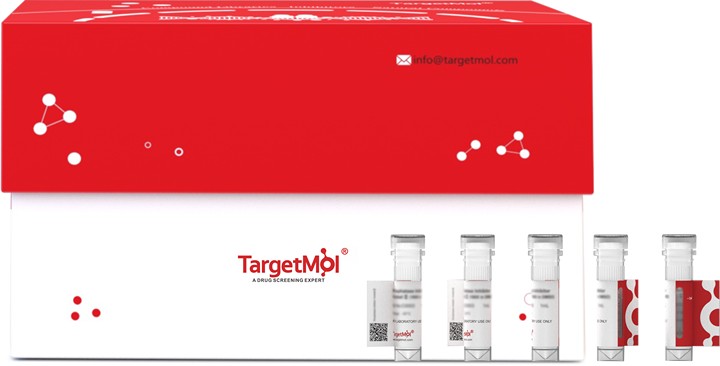 您的购物车当前为空
您的购物车当前为空
GFAP Protein, Human, Recombinant (His)
一键复制产品信息别名 Glial Fibrillary Acidic Protein, GFAP
Glial Fibrillary Acidic Protein (GFAP) is an intermediate filament (IF) protein which belongs to the intermediate filament family. GFAP is expressed in numerous cell types of the central nervous system (CNS), ependymal cells and phosphorylated by PKN1. GFAP, a class-III intermediate filament, is a cell-specific marker during the development of the central nervous system and distinguishes astrocytes from other glial cells. It is closely related to its non-epithelial family members, vimentin, desmin, and peripherin, which are all involved in the structure and function of the cell's cytoskeleton. GFAP is thought to help to maintain astrocyte mechanical strength, as well as the shape of cells but its exact function remains poorly understood.

GFAP Protein, Human, Recombinant (His)
一键复制产品信息Glial Fibrillary Acidic Protein (GFAP) is an intermediate filament (IF) protein which belongs to the intermediate filament family. GFAP is expressed in numerous cell types of the central nervous system (CNS), ependymal cells and phosphorylated by PKN1. GFAP, a class-III intermediate filament, is a cell-specific marker during the development of the central nervous system and distinguishes astrocytes from other glial cells. It is closely related to its non-epithelial family members, vimentin, desmin, and peripherin, which are all involved in the structure and function of the cell's cytoskeleton. GFAP is thought to help to maintain astrocyte mechanical strength, as well as the shape of cells but its exact function remains poorly understood.
| 规格 | 价格 | 库存 | 数量 |
|---|---|---|---|
| 5 μg | ¥ 693 | 6-8日内发货 | |
| 10 μg | ¥ 1,170 | 6-8日内发货 | |
| 20 μg | ¥ 1,860 | 5日内发货 | |
| 50 μg | ¥ 3,470 | 5日内发货 | |
| 100 μg | ¥ 4,930 | 5日内发货 | |
| 200 μg | ¥ 7,350 | 5日内发货 | |
| 500 μg | ¥ 12,100 | 5日内发货 | |
| 1 mg | ¥ 17,300 | 5日内发货 |
产品介绍
| 产品描述 | Glial Fibrillary Acidic Protein (GFAP) is an intermediate filament (IF) protein which belongs to the intermediate filament family. GFAP is expressed in numerous cell types of the central nervous system (CNS), ependymal cells and phosphorylated by PKN1. GFAP, a class-III intermediate filament, is a cell-specific marker during the development of the central nervous system and distinguishes astrocytes from other glial cells. It is closely related to its non-epithelial family members, vimentin, desmin, and peripherin, which are all involved in the structure and function of the cell's cytoskeleton. GFAP is thought to help to maintain astrocyte mechanical strength, as well as the shape of cells but its exact function remains poorly understood. |
| 生物活性 | Activity has not been tested. It is theoretically active, but we cannot guarantee it. If you require protein activity, we recommend choosing the eukaryotic expression version first. |
| 研究背景 | Glial Fibrillary Acidic Protein (GFAP) is an intermediate filament (IF) protein which belongs to the intermediate filament family. GFAP is expressed in numerous cell types of the central nervous system (CNS), ependymal cells and phosphorylated by PKN1. GFAP, a class-III intermediate filament, is a cell-specific marker during the development of the central nervous system and distinguishes astrocytes from other glial cells. It is closely related to its non-epithelial family members, vimentin, desmin, and peripherin, which are all involved in the structure and function of the cell’s cytoskeleton. GFAP is thought to help to maintain astrocyte mechanical strength, as well as the shape of cells but its exact function remains poorly understood. |
| 种属 | Human |
| 表达系统 | E. coli |
| 标签 | N-6xHis |
| 蛋白编号 | P14136 |
| 氨基酸序列 | Leu292-Met432 |
| 蛋白构建 | Leu292-Met432 |
| 蛋白纯度 | Greater than 95% as determined by reducing SDS-PAGE. (QC verified) |
| 缓冲液 | Lyophilized from a solution filtered through a 0.22 μm filter, containing 20 mM Tris-HCl, 10% Trehalose, 0.05% Tween 80, pH 8.5. |
| 复溶方法 | Reconstitute the lyophilized protein in distilled water. The product concentration should not be less than 100 μg/ml. Before opening, centrifuge the tube to collect powder at the bottom. After adding the reconstitution buffer, avoid vortexing or pipetting for mixing. |
| 别名 | Glial Fibrillary Acidic Protein, GFAP |
| 内毒素 | < 0.1 ng/µg (1 EU/µg) as determined by LAL test. |
| 分子量 | 17 KDa (reducing condition) |
| 颜色 | White |
| 物理性状 | Lyophilized powder |
| 运输方式 | In general, Lyophilized powders are shipping with blue ice. Solutions are shipping with dry ice. |
| 存储 | Lyophilized powders can be stably stored for over 12 months, while liquid products can be stored for 6-12 months at -80°C. For reconstituted protein solutions, the solution can be stored at -20°C to -80°C for at least 3 months. Please avoid multiple freeze-thaw cycles and store products in aliquots. |
计算器
剂量转换
对于不同动物的给药剂量换算,您也可以参考 更多





 还可以
还可以
 |
|